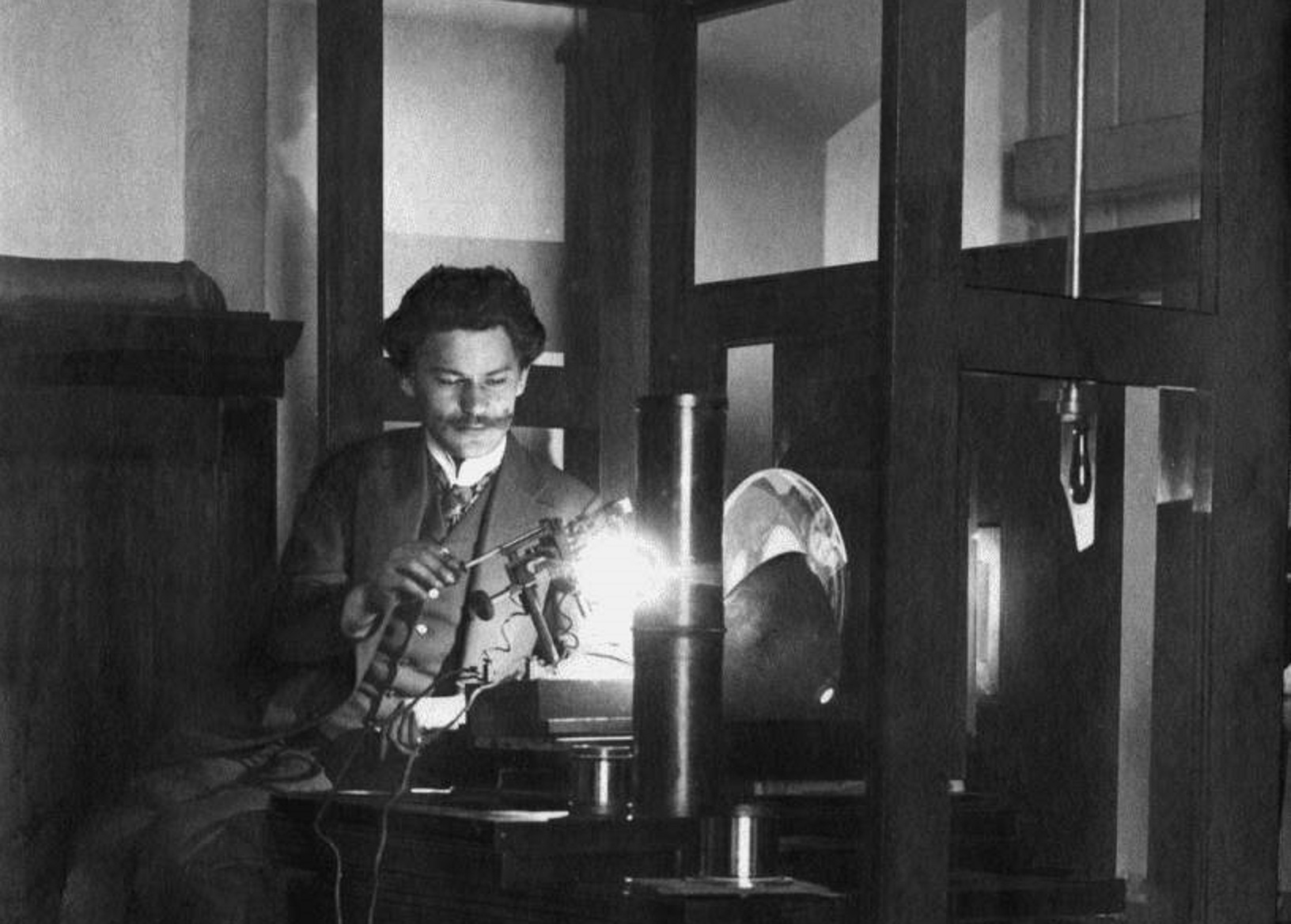An inscrutable face, a short moustache, today bringing no good associations yet a century ago almost a classic feature of an officer’s image, and original service ribbons on his distinctions – from the Silesian Cross of Valour to the Order of the Rising Sun. The phrase ‘He took many secrets to his grave’ sounds like taken from an old-fashioned detective novel, yet Lieutenant Colonel Jan Kowalewski, a linguist and cryptologist, really did. Before that, however, he would reveal a host of them. Those most important secrets that were decisive in ensuring the victory in the Battle of Warsaw.
by Wojciech Stanisławski
When one looks at the best-known Polish cryptologist (with the exception of the Enigma breakers) from the perspective of his success, it seems that he was plain destined to succeed, or at least most events from his youth were leading him towards those decisive moments in 1920. Born into an intelligentsia family of average wealth and average patriotic zeal in the Kingdom of Poland in the late 19th century, as a schoolchild he did not engage in the school strike or the major unrest of the 1905 Russian Revolution: in 1909, he graduated from the School of Economics in Łódź and went on to study at the Technical University in Liège. It was the best educational option for someone born in Łódź! Indeed, the year and a half before the outbreak of the war he spent as an engineering intern in Zgierz and then Bila Tserkva in Ukraine. Once the war had started, his life initially took a somewhat routine course given the turmoil embracing the world; he was called to do military service, went to a school for officers in Kiev, and served as a warrant officer in a regiment of engineer troops in Feodosia and on the Romanian front together with the 260th infantry regiment; that was more liaison services than first-line reconnaissance.
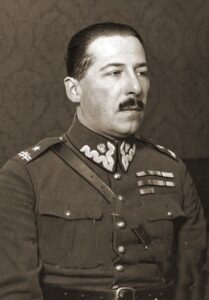
The pace of the events around young Kowalewski would accelerate only after the outbreak of the February Revolution: the second lieutenant (his frontline advancement) becomes engaged in putting together the Union of Military Poles and finds himself in the 2nd Polish Corps. After the battle of Kaniv and landing in German captivity, he shows his true capability: not only does he escape but with stolen files of the corps at that!
In Moscow in late 1917 and early 1918, he was an important agent organising the 4th Polish Rifle Division of Gen. Żeligowski, where he headed the intelligence unit. After the epic history of the Polish army in the East, he came to Poland in the summer of 1919 and in the natural course of things was sent to the 2nd Department of the Polish General Staff, where his job was to read, classify and occasionally decrypt communications.
It was also then, in August 1919, that he began work on reading encrypted Russian messages. That was the point in time when his various abilities and talents which he had not had an opportunity to use previously came together to make him succeed. Sparkling intelligence, curiosity and inquisitiveness are one thing, reading ‘The Gold Bug’ by Poe, the first initiation to cryptography for many, is another, yet all that would have been in vain, had it not been for his excellent knowledge of French (Liège), algebra and combinatorics (Liège), Russian (Bila Tserkva and Kiev), message pragmatics of the Russian troops (Feodosia and the Romanian front), military files (Kaniv) and matters of intelligence (Moscow and Warsaw).
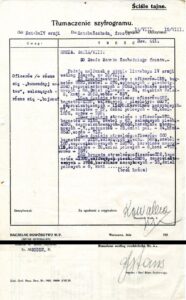
Professor Grzegorz Nowik, Jan Kowalewski’s biographer and currently the most eminent expert on the triumphs of Polish cryptography swears that the decryption of the first message was possible due also to other much more banal circumstances: supposedly it was deciphered because of on-duty times had to be changed as Lt Bronisław Srok’s sister was getting married and his colleague Lt Kowalewski replacing him started to look for a key out of boredom, using a Poe-inspired trick… Legend has it that he read ‘i’ as the first letter, easy to find because appearing regularly in the word ‘дивизия’ (division), inevitably featuring in military communications.
Was it really ‘division’ that surrendered as first? Even if we are not sure about that, it cannot be contested that already in August 1919 Lt Kowalewski was heading the radio intelligence service of the 2nd Department – in actual fact building it from scratch applying extraordinary imagination. He did not stop at hiring many cryptographers; he made use of scholars, first setting up a network of radio interception, and then securing help of leading mathematicians, the creators of the Lwów school, including Wacław Sierpiński. Graduates of mathematical faculties would land directly at the headquarters of individual Polish armies and divisions so as to shorten the time needed for reading Soviet communications as much as possible.
That was the first of Kowalewski’s victories – one that resulted in, inter alia, his studies at the Higher Military School (École supérieure de guerre) in Paris, lectures on the art of encryption and decryption delivered for the staff of the Japanese army in Tokyo, heading Polish intelligence during the popular plebiscite in Silesia and the Third Silesian Uprising, and, well, a Virtuti Militari Cross, awarded to him with a comment ‘to the victory, Lieutenant!’.
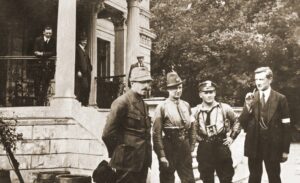
After a few years of service at the General Staff of the Polish Army, in March 1929 he was sent to Moscow as military attaché. At that time, Soviet Russia was already, as testified by numerous historians of intelligence, almost ‘impenetrable’; even officially published data were questionable in terms of reliability, possibilities of securing informants close to none and staff of the embassy put under surveillance. Kowalewski would find a solution to it, too: he would become one of eminent practitioners of ‘white intelligence’ using as much as possible, juxtaposing and processing all official data published in the Soviet press and scientific elaborations. At the same time, thanks to his photographic memory (one more talent!), he made ‘from memory’ drawings of military equipment presented at parades and shows of the Red Army (at a time when no micro spy cameras existed).
He received an extraordinary distinction for that: Soviet authorities considered him a persona non grata, ordering him to immediately stop his diplomatic service and leave the country. ‘He managed to make his office a first-class diplomatic source for the General Staff,’ Lt Col Tadeusz Pełczyński said summing up his achievements. Was it not yet another victory of his?
Jan Kowalewski (promoted to become lieutenant colonel in the meantime) contributed to some key, most frequently secret, initiatives of the political authorities of the Second Polish Republic in the period when tensions were rising in the final post-war years. As attaché in Romania (1933–1937), he cares about preserving the Polish–Romanian alliance, provides advice for Romanian counterintelligence officers and circles active in the creation of the Romanian defence industry, at the same time remaining open when talking to his superiors expressing his criticism of the local armed forces and political elites. In February 1937, he takes part in in one of the most serious initiatives of the Sanation camp aimed at breaking the political impasse in the Second Polish Republic; he becomes one of the leaders of the Camp of National Unity (CNU) and holds negotiations with the key opposition groupings: the Polish Socialist Party, represented by Mieczysław Niedziałkowski, and Maciej Rataj of the People’s Party. When it turns out, however, that the hard line of the Camp’s top man Adam Koc prevails – Lt Col Kowalewski resigns immediately, ending his, as he put it, ‘brief and unfortunate stay in the CNU’.

He is active in the joint-stock company Tissa (Society for Imports of Raw Materials) acquiring key strategic raw materials for the defence industry. Before the outbreak of the war, he manages to set up a network of material experts and trade agents making purchases of rare-earth metals.
Yet his third and greatest victory would come during the Second World War. He used his Romanian contacts from his attaché years to put together a committee of aid to refugees from Poland in Bucharest. Yet there was a more serious field of activity awaiting him. As one of the few Sanation-time high-ranking officials, he had a chance to participate in initiatives of Gen. Sikorski; first, on the latter’s personal commission, he designs an Allied offensive in the Balkans, and then, after France’s fall, he reaches neutral Portugal. There, first in provincial Figueira da Foz, and then Lisbon, he sets up another refugee aid centre, at the same time the key hub of the ‘Continental Action’.
A still too little known Polish initiative during the Second World War, the Continental Action was a structure tasked with coordination of the intelligence and civil efforts of citizens from Western Europe (and later also Scandinavia, the Balkans or North Africa) directed against the occupying forces. Designed by the First Secretary of the Polish Embassy in Paris Jan Librach, the Action aimed at collecting political and economic information as well as engaging in minor sabotage and propaganda actions. The facility in Figueira da Foz / Lisbon was the heart of the Action; its additional objective was to keep the milieus of Polish economic migrants in France and Belgium on call as the London-based Polish authorities in exile hoped to recruit among them once Anglo–Saxon troops had invaded continental Europe.
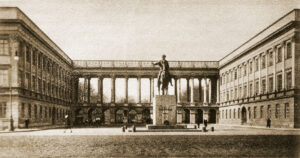
Yet even that was no enough for Kowalewski who, using his pre-war contacts, initiated talks, with London’s blessing, concerning a truce or leaving the coalition with the Third Reich with three of its allies: Italy, Romania and Hungary. Contact with Marshals Antonescu and Horthy was successfully established, as well as the former top man of Italian diplomacy Dino Grandi… It was only the Casablanca conference that put an end to that initiative when Churchill and Roosevelt agreed to Stalin’s concept of the ‘war until an unconditional capitulation’, much better guaranteeing a Soviet expansion in Europe. Kowalewski was recalled from the office in Lisbon on Stalin’s personal request communicated to Churchill: could there be a higher distinction for a Polish diplomat in the tragic years 1943–1944 than to throw the leader of the Soviet Union off balance?
For Lt Jan Kowalewski, however, such an emotional reaction on Stalin’s part meant that he had to stay abroad after the war. In London, he published a weekly devoted to the countries engulfed by communism (East Europe and Soviet Russia) as well as collaborated with the American and émigré press. He also published parts of his memoirs in Paris-published Zeszyty Historyczne. However, it cannot be disputed that most of his colossal knowledge – about the beginnings of Polish Sovietology, building a system of alliances by the Second Polish Republic or clandestine negotiations with leaders of the satellite countries of the Axis – he shared with no-one. He knew there existed no ciphers that could not be broken.
Author: Wojciech Stanisławski
Translation: Alicja Rose & Jessica Sirotin


